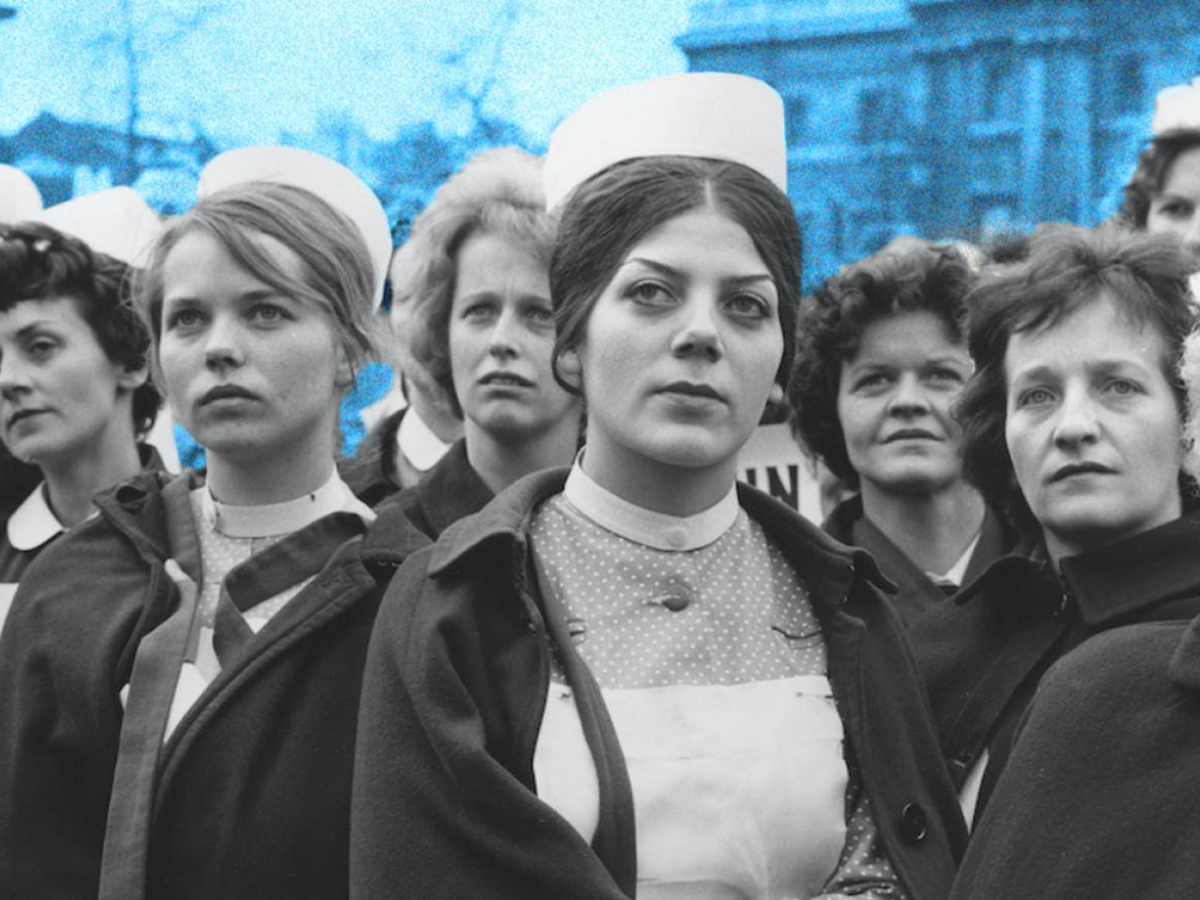This year, the Government Equalities Office (GEO) and the Equality of Human Rights Commissions (EHRC) has suspended their annual Gender Pay Gap report due to the COVID-19 pandemic. Ironically, there is alarming number evidence showing how gender inequality has drastically increased during the pandemic; this would include essential workers such as the NHS workforce.
A recent report by the LSE-Lancet Commission suggests how the COVID-19 pandemic highlighted (and impacted) the strengths and weaknesses of the NHS; among them being the disparity of income and health between female and male NHS staff. The report proposed seven recommendations for the health system to build back better post-pandemic. Before analysing this, it is worth considering what gender (in)equality was like before the pandemic.
Gender Equality in the NHS: Pre-Pandemic
With 77% of their staff being women, the NHS is not just a leading example for a publicly-funded healthcare system, but also female representation. It can be seen fighting for gender equality in its Equality Objectives, first published in 2016.
Gender equality is highlighted under Equality Objective 6, which aims “to improve the recruitment, retention, progression, development and experience of the people employed by NHS England to enable the organisation to become an inclusive employer of choice”. This equality objective is supported and strengthened by associated targets including; reporting progress of equality (gender, race, ethnicity, disability, etc.), actively engaging and supporting NHS staff networks such as the Women’s Development Network, reviewing staff feedbacks on protected characteristics, and seeking external review with other relevant equalities standards and benchmarks.
We can see whether these objectives were successfully met by analysing the Annual Equality Information Reports (published by NHS Trusts) and understand how much progress has been made since its first publication in 2016. The Gender Pay Gap (GPG), which is an important element in measuring gender inequality, was first introduced in 2017. Given that, an analysis has been made of the data from 2017 until 2020 annual reports published by the NHS Barts Trust.
Gender Pay gap Analysis
Using the data from 2017 until 2020, the NHS Barts Trust have found the following information:
For the mean difference in hourly pay, the figures have been decreasing from 20.2% in 2017 to 17.5% in 2020 (although there was an upward tick from 19.6% to 19.9% in 2018-2019). The same occurred for the median difference in hourly pay, as it decreased from 13.3% to 12.7% (despite a 2% increase from 2018 to 2019). For the percentage of women in the lower hourly pay quarter, the figures have also been decreasing from 73.8% to 70.7%. This is the same for the upper hourly pay quarter, as it fell by 0.2% to 58% in 2020.
Furthermore, the ratio of those who received bonus pay stayed relatively similar over the years; with it being unequally distributed between the genders as 0.7% women and 3.9% men received bonus pay in 2017 and 0.7% women and 3.4% men received bonus pay in 2020. On a positive note, however, the median difference in bonus pay fell from 33.3% in 2017 to 20% in 2020.
Despite its exemplary efforts, many reports and articles suggest that there is still room for improvement – this was specially made evident during the COVID-19 pandemic, which altered the route to gender equality in the NHS.
Gender Equality in the NHS: Post-Pandemic
The LSE-Lancet Report found that the COVID-19 pandemic had the greatest impact on worsening the socioeconomic and racial inequalities in the UK and the consequences that these inequalities have for healthcare workers:
“The numbers of doctors, nurses, and other health and care workers from Black, Asian, and minority ethnic groups who are dying from COVID-19 are disproportionate”
Though not as significant, gender inequality poses a worrying factor impacted by the pandemic. Another Lancet Report expresses concerns on how the COVID-19 pandemic has not only highlighted the gender inequality within the NHS but could worsen them.
Among the many reasons for this is the way the NHS pay progression is structured. The NHS pays automatically and incrementally over several years – this means that those who work consecutively, with no breaks, will receive a higher pay than those who take breaks (including maternity leave). This is especially disadvantageous towards women who are actively working during the pandemic, as they are more likely to have a worsened work-life balance. Moreover, the reduction in the child-care provision due to the pandemic will have disproportionately stalled the careers of women in medicine – a historically recurring pattern.
This is significantly worse for BAME women who are more likely to be in patient-facing roles, where workplace systems and discrimination might lead to feeling pressurised to work without adequate PPE. A BMJ Opinion blog post written by the co-founders of Women Speakers in Healthcare says likewise:
“Covid-19 clearly exposes the vulnerability of those at the intersection of gender and race; it is a disease which is causing the deaths of more ethnic minority patients in the US, and more ethnic minority key workers in the UK, due to social inequality and, particularly women from ethnic minorities, due to the higher proportion in lower paid frontline healthcare and caregiving roles.”
Recommendations:
After analysing the strengths and weaknesses highlighted by the COVID-19 pandemic, the LSE-Lancet Report put forward seven recommendations to achieve their NHS in 2030 vision. In reference to gender equality, health executives should refer to the third recommendation:
“Recommendation 3: develop a sustainable, skilled, and inclusive health and care workforce to meet changing health and care needs”
Under this, (recommendation 3C), the report recommends that workforce strategies should strongly take into account the health, morale, and wellbeing of the healthcare workforce. This includes addressing and tackling discrimination and harassment based on protected characteristics (including gender). Taking into account the annual WRES report and its “modest” progress, the report suggests that senior figures should take strong measures and install mechanisms to ensure that the people in leadership roles are held to account for failure in making progress for equality.
Summary and Conclusion:
Comprising 77% women and 33% men, the NHS remains a leading example of female representation in the workforce. Based on the NHS Barts Trust, the Gender Pay Gap is slowly diminishing – but there is still room for progress. This is specially made true during the COVID-19 pandemic, as wage disparities between genders worsened. A useful solution to this problem is highlighted by the LSE-Lancet Report under Recommendation 3.
About the Author: Annissa Kumaladewi
Annisa Kumaladewi is a contributing current affairs Features writer. Her expertise lies in current affairs in the Asian diaspora, Indonesian history and World political philosophy.
Recommended for you

Antidepressant Prescribing at Six-Year High
More people are taking antidepressants than ever. Is this a dark sign of the times or an indication that mental health stigma is changing?

Can AI be Used to Determine Cancer Recurrence?
When cancer patients go into remission, they often worry about it coming back. AI can now help identify those at risk of cancer recurrence.

Pegasus – Still a Threat to the UK?
The notorious Pegasus spyware has been misused to exploit vulnerabilities in devices, even those kept within the walls of Number 10.
Trending

Drug Decriminalisation: Could the UK Follow Portugal?
Portugal’s drug decriminalisation has reduced drug deaths and made people feel safe seeking support. Would the UK ever follow suit?

Calling All Unvaccinated UK Adults
With Covid cases rising, the NHS is urging the 3 million UK adults who remain unvaccinated to come forward.




